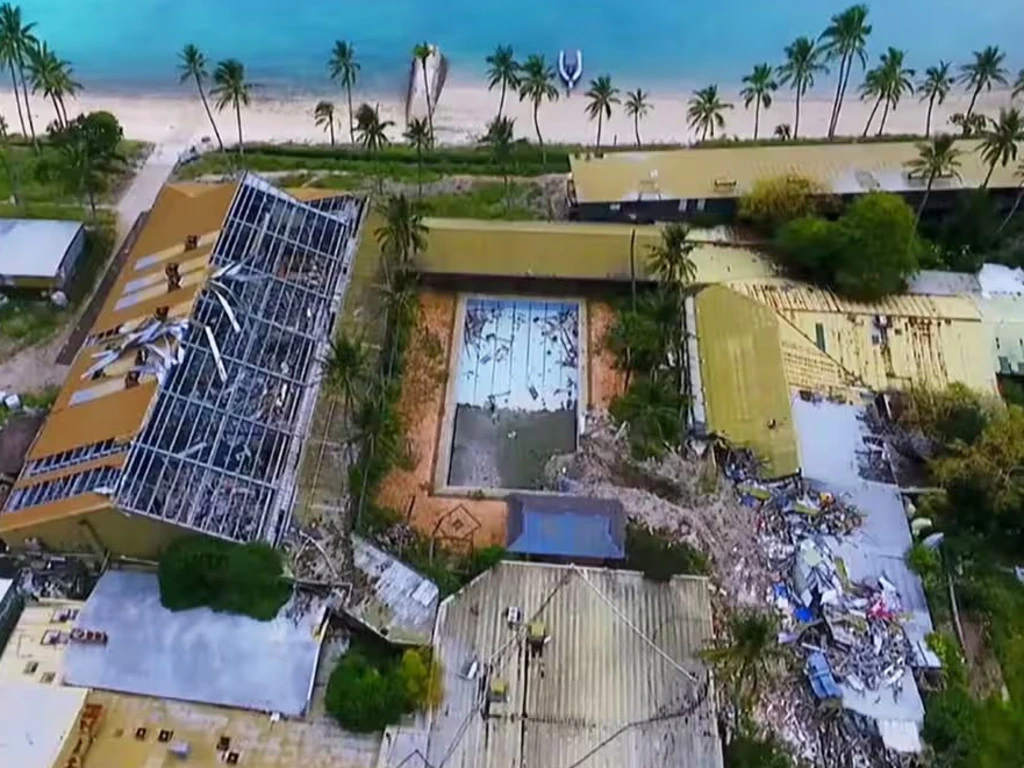How New Modular Geodesic Architecture is Revolutionizing the Ultra-Luxury Hospitality Industry
“It’s a very spooky and slightly apocalyptic feeling to be in a resort that has been closed since 2006” – these words from Anna Willson, a sailor who toured Queensland’s coastline, ring like an alarm bell for our entire industry.
The Graveyard of Golden Dreams
As I write these lines, dozens of luxury resorts that were once “the crown jewels of tourism” lie like skeletons in tropical paradises. Brampton Island, South Molle, Long Island, Lindeman, Dunk Island… names that once evoked luxury and exclusivity are now synonymous with multi-million-dollar investments turned to ruins.
The reality is brutal: over $2 billion in tourism investments have been reduced to rubble across Queensland’s islands. Swimming pools filled with garbage, crumbling structures, pristine beaches stained by the remains of failed business dreams.
What is killing the ultra-luxury island tourism industry?
The Perfect Storm Destroying Hotel Empires

The case of Benny Wu is emblematic. This Hong Kong billionaire bought Double Island for $5.68 million in 2012, promising to create an offering for “very wealthy tourists” in the “upper end of the market.” Six years later, the Queensland government confiscated the property due to abandonment.
The numbers don’t lie:
- Brampton Island: closed since 2011, $5.9 million investment lost
- South Molle Island: $35 million invested, sold at a loss in 2023
- Lindeman Island: $583 million project cancelled, no reopening date
- Great Keppel Island: closed since 2008, requires $30 million just for cleanup
The pattern is always the same: colossal investments in rigid infrastructure that becomes a death trap when hurricanes hit, regulations change, or the market transforms.
The Four Horsemen of the Hotel Apocalypse
1. The Tyranny of the Elements Cyclones Yasi, Debbie, and Anthony didn’t just destroy buildings; they annihilated complete business models. When you invest $100-500 million in permanent structures, a Category 4 hurricane can erase decades of planning in 24 hours.
2. The Architectural Rigidity Trap Traditional resorts are like dinosaurs: enormous, expensive to maintain, and completely inadaptable. When the market demands different experiences, when environmental regulations change, when pandemics transform travel patterns, these rigid structures become financial burdens.
3. The Black Hole of Operating Costs Maintaining permanent infrastructure on remote islands is economically devastating. Every broken pipe, every broken air conditioning system, every structural repair requires complex logistics and exponential costs. As the Whitsunday Conservation Council notes: “they require constant reinvestment to survive.”
4. The Regulatory and Environmental Nightmare Increasingly strict environmental regulations are turning many approved projects into worthless paper. Permits that took years to obtain can become obsolete, environmental impact assessments can change, and sustainability commitments can become technical impossibilities.
The Silent Revolution: Adaptive Architecture for the 21st Century
While industry giants struggle to resurrect their multi-million-dollar ruins, a silent revolution is emerging in the offices of visionary architects and intelligent developers.
The disruptive question is simple: What if we could create ultra-luxury experiences that are invulnerable to hurricanes, adaptable to any regulation, sustainable by design, and economically resilient?
Imagine for a moment a luxury resort that can:
- Withstand Category 5 hurricanes without structural damage
- Be dismantled and relocated in 30 days if regulations change
- Instantly adapt to new market demands
- Operate with negative carbon footprint from day one
- Generate positive ROI in the first season
This isn’t science fiction. It’s intelligent modular architecture.
Angular Domes: The Answer the Industry Has Been Waiting For
While traditional developers continue betting on structures that take 3-5 years to build and 20 years to amortize, modular geodesic architecture is redefining the rules of the game.
Extreme Resistance Without Rigidity Geodesic domes distribute forces uniformly, making them the most resistant structures known to humanity. While traditional resorts collapse under 200 km/h winds, these pavilions can resist Category 5 hurricanes, 8.5-degree Richter scale earthquakes, and climatic conditions that would make any conventional structure tremble.
Total Adaptability Did environmental regulations change? Does the market demand different experiences? Need to relocate your resort? A modular complex can be dismantled, transported, and reinstalled in any location in weeks, not years. Each dome is a liquid asset that maintains its value regardless of location.
Radical Sustainability While traditional resorts are energy black holes, Angular domes can be designed to be completely self-sufficient: integrated solar panels, rainwater collection systems, greywater treatment, and 100% recyclable materials. It’s not just sustainability; it’s environmental regeneration.
Unique Immersive Experiences The transparency of glass, direct connection with nature, the sensation of sleeping under the stars while maintaining five-star hotel luxury. These spaces don’t just offer accommodation; they create unforgettable memories.
The New Paradigm: From Ownership to Experience
Success stories like Hayman Island ($135 million investment in reconstruction) and Daydream Island ($100 million in redevelopment) demonstrate that the ultra-luxury market remains viable. But these projects followed the traditional model: demolishing and rebuilding rigid structures that will again be vulnerable to the next hurricane.
The future belongs to those who understand that true disruption isn’t about building stronger, but building smarter.
An Angular Domes modular resort can be installed on Lindeman Island in 6 months, generate income immediately, and if another Cyclone Yasi arrives, it can be protected or relocated without catastrophic losses. When market trends change, it can adapt. When regulations evolve, it can comply without rebuilding from scratch.
The Golden Opportunity for Visionaries
The Queensland government has committed $30 million to restoration efforts and is actively seeking investors to revitalize these islands. Their new Destination 2045 strategy aims to double tourism’s economic value to $84 billion in 20 years.
For intelligent developers, this is the moment to demonstrate that the future of luxury tourism isn’t about repeating past mistakes, but revolutionizing the industry with solutions that are simultaneously:
- More resistant than any traditional structure
- More sustainable than any conventional resort
- More profitable than massive investment models
- More experiential than standard hotels
The Moment of Truth
As I write this article, there are investors betting hundreds of millions on rebuilding resorts with the same rigid architecture that already failed. There are developers planning structures that will take years to build and decades to amortize. There are hotel chains diversifying into islands with the same models that created the resort graveyards we see today.
The question isn’t whether there will be more hurricanes, more regulatory changes, more market disruptions. The question is: will we continue building dinosaurs or start creating evolutionarily superior organisms?
The skeletons of Brampton Island, South Molle, and dozens of other abandoned resorts aren’t just ruins. They are lessons written in concrete and steel about what happens when ambition isn’t accompanied by adaptive intelligence.
The future of ultra-luxury tourism will be modular, sustainable, resilient, and experiential. Or it won’t be.
The revolution has already begun. The only question is: will you be building the future or lamenting the past?
What do you think? Is it time for the luxury hospitality industry to abandon traditional architectural rigidity and adopt intelligent modular solutions? I’d love to hear your perspective in the comments.
#LuxuryTourism
#HospitalityInnovation
#ModularArchitecture
#Sustainability
#ClimateResilience #HospitalityFuture
#Ecoluxury Tourismv
#SustainableInvestments
#EcoResortDevelopment
#FutureOfHospitality
#GreenReturns
#RegenerativeTourism
#ImpactInvestment
#TourismInnovation
#SmartHospitality
#NatureBasedDevelopment






